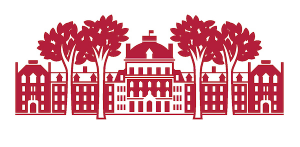How do we imagine and create a resilient world? Design disciplines like landscape architecture toe the line between art and science, unifying creative practices and scientific research and methodologies. Design itself is an act of transformation and translation that involves imagining, communicating, and manifesting alternative futures. In this course, practicing landscape architects will introduce students to the design process at a range of physical and temporal scales. Through the medium of landscape, students will engage layered systems of landform, water, plants, movement, human and non-human use, and time. Readings and lectures on design and planning history, theory, and practice will be coupled with guest presentations on real world case studies.
In the first half of the semester, students will learn how to measure, map, and intervene on an imagined landscape, and will translate these skills, in the second half of the semester, to design a site-specific intervention on Swarthmore’s campus. Students will develop technical skills (topographic survey, site grading, watershed analysis, orthographic drafting) and representational techniques (analog and digital drawing, collage, physical modeling, material studies) as they gain familiarity with concepts such as aesthetics, sustainability, ecological restoration, urban ecology, green infrastructure, and more. Weather-permitting, much time will be spent in the field on Swarthmore’s campus, where spaces like the Scott Arboretum and Crum Woods provide opportunities for design study.
This course is structured to reflect graduate-level design curricula. While we expect that many or most of you will take this course with you in directions that do not include graduate-level design school, some of you may be interested in getting a taste of design pedagogy, and others may benefit from material that can contribute significantly to a graduate school application portfolio (MLA/MFA/MArch, at least). The course is designed to cultivate at least two modes of thinking: landscape thinking, and design thinking. We feel that both are valuable, regardless of your future plans.
In the first half of the semester, students will learn how to measure, map, and intervene on an imagined landscape, and will translate these skills, in the second half of the semester, to design a site-specific intervention on Swarthmore’s campus. Students will develop technical skills (topographic survey, site grading, watershed analysis, orthographic drafting) and representational techniques (analog and digital drawing, collage, physical modeling, material studies) as they gain familiarity with concepts such as aesthetics, sustainability, ecological restoration, urban ecology, green infrastructure, and more. Weather-permitting, much time will be spent in the field on Swarthmore’s campus, where spaces like the Scott Arboretum and Crum Woods provide opportunities for design study.
This course is structured to reflect graduate-level design curricula. While we expect that many or most of you will take this course with you in directions that do not include graduate-level design school, some of you may be interested in getting a taste of design pedagogy, and others may benefit from material that can contribute significantly to a graduate school application portfolio (MLA/MFA/MArch, at least). The course is designed to cultivate at least two modes of thinking: landscape thinking, and design thinking. We feel that both are valuable, regardless of your future plans.
- Teacher: Claire Casstevens
- Teacher: Rebecca Popowsky
